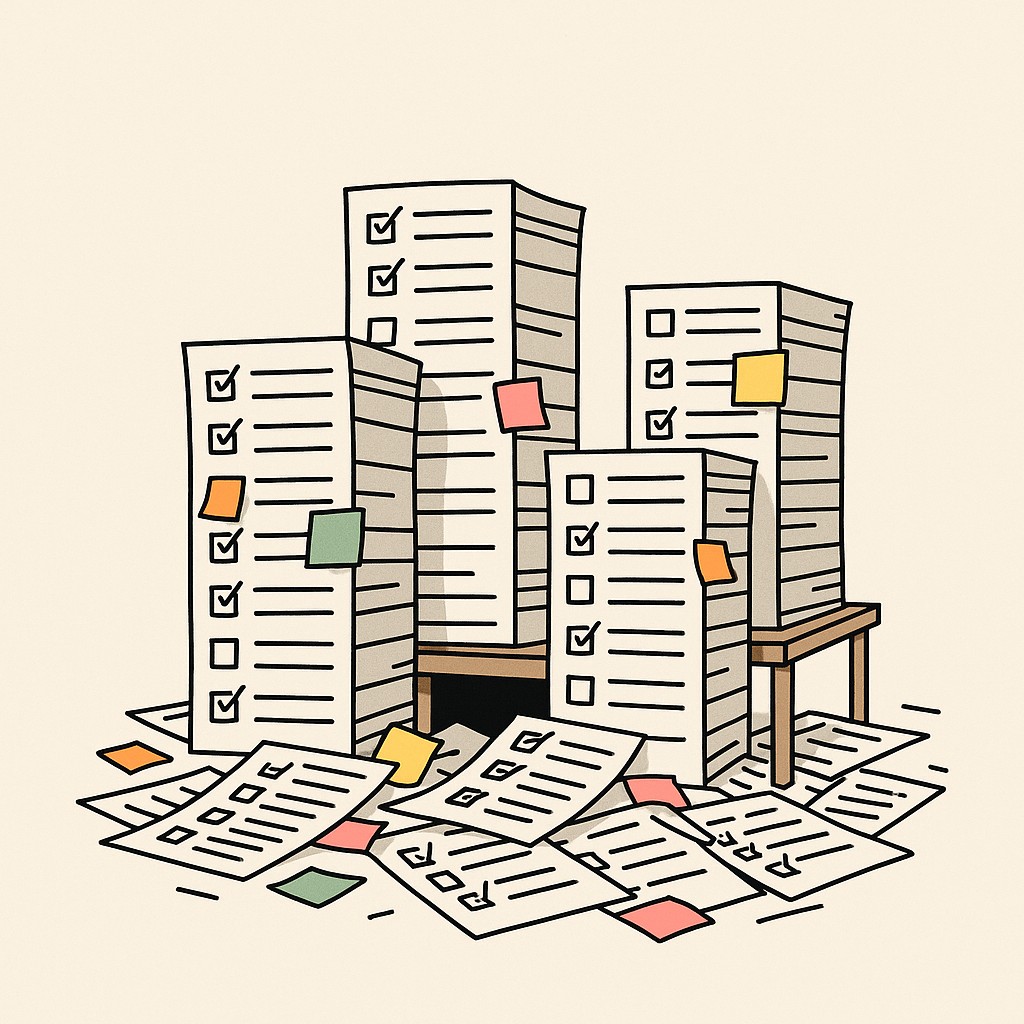How to Push Back on Stakeholder Requests Without Losing Trust
How to Push Back on Stakeholder Requests Without Losing Trust

Why Saying “Yes” Isn’t Always Strategic—Push Back on Stakeholder Requests
Early in my career, I thought saying “yes” was the fastest path to success, not realizing the value of learning to push back on stakeholder requests. You know how it goes. Someone messages with a new feature idea, the team needs a quick fix, a manager asks for an estimate before lunch is over. I wanted to be the engineer who could handle anything, so my default was to agree and figure it out later. It felt safe, almost expected.
But I learned quickly that “yes” stacks up. My todo list grew, but so did the fallout. I started to notice maintenance bills arriving for features that were added “just because,” and half the time, we ended up supporting things no one really needed. Looking back, I realize saying yes was costing more than I thought. If you’ve found yourself in this cycle, you’re not alone.

The reality, whether you’re deep into ML or just handling tickets for an app, is relentless. Every week, some version of “Can you add this?” “How soon can we get this out?” “Can you tweak it for our workflow?” lands in your inbox. There’s always another request, usually marked “ASAP,” waiting behind the last one.
At first, it feels like progress, stacking features, showing velocity. But pretty soon, I began to notice my calendar was full, but none of it was moving the metrics we cared about. Features go in, but maintenance debt piles up. The work started looking busy instead of strategic. Worse, when you grab everything, you end up spending time on things that pull focus away from real business goals. Over time, you’re just keeping up, not moving forward.
Here’s the shift that helped me escape that cycle. I started reframing requests by asking what’s behind them, what actually moves the needle, and what fits with our current constraints. Framing cuts down back-and-forth, which stabilizes outputs. When you turn things around and start asking “What does this really solve?” or “Is this the right time for this?” you can redirect effort without letting trust slip.
The truth is, learning to push back—respectfully, with structure—sets you up for better outcomes and stronger credibility. I want you to feel confident that you can say no to stakeholders (or not now) without sounding obstructive. The best teams don’t just say no. They make sure every no is an informed, strategic decision.
Pushback Builds Trust—If You Frame It Right
Here’s what I started to see clearly. Pushback works because it shifts the conversation from “Can you do this?” to “What are we trying to achieve, and what does it actually cost?” When things get reframed around outcomes and tradeoffs, the signal goes up and the noise drops out. Suddenly, you’re not just reacting to requests—you’re charting a path that fits the team’s actual goals. Six months ago, I was still struggling to feel sure about this, but a few tough conversations changed how I approach my own priorities.
Saying no wasn’t defiance. It was guidance toward the right yes.
Let’s talk about what makes this hard. Maybe you worry it’ll take too much time. Maybe you’re afraid you’ll look obstructive, or you’re missing key data to stand your ground. I’ve felt all of those, and you probably have, too.
But here’s the thing. Pushback isn’t a rejection. It’s a move toward collaboration—not just a way to decline stakeholder requests. Great engineers don’t just reject requests—they redirect, align, and educate. When you engage stakeholders, you turn a request into a chance to clarify, explore alternatives, and anchor decisions in reality.
When you do this consistently, something shifts. Your credibility grows, focus sharpens, and the impact on the business becomes obvious. This is why learning how to push back the right way is worth investing in. It’s the difference between just keeping up and actually driving outcomes that matter.
How to Turn Requests into Aligned, Evidence-Backed Decisions
Over the years, I realized I needed something repeatable—a playbook I could reach for whenever someone dropped a “can we do this ASAP?” in my inbox. Here’s the version that stuck. It’s four moves you can run in any real conversation, whether you have two days or two minutes. Reframe the ask around actual goals, quantify what it would take, surface other ways to solve it, and if it’s not the right moment, agree on when you’ll revisit. Each move helps you stay in sync with people, not just the ticket.
Let’s break down step one. Instead of starting with what you can’t do, start by clarifying what everyone’s trying to achieve. Ask, “What’s the outcome we need here?” or “How will we know this worked?” Even if the request comes in hot or half-baked, you can redirect the conversation. “Here’s what we’d need to make it work.” That phrase kept me out of dead ends and let me pivot from flat rejection to possibility. By focusing on goals, success metrics, and real constraints, you move the conversation out of the weeds and into strategic territory—fast.
Next is step two. Once the goal is on the table, it’s time to anchor the conversation in data-backed prioritization. “This would take 6 weeks of engineering time—let’s make sure it’s the highest-value investment.” I learned that many teams use the RICE model to quantify reach, impact, confidence, and effort—making it easier to anchor decisions in real data. source Sometimes, just seeing the numbers is enough to clarify whether something’s urgent or not.
I should mention, there was this one time last spring when someone needed what sounded like a minor tweak. We were halfway to building it from scratch when it dawned on me—the config toggle already did everything they wanted. I don’t know why, but I keep making that same mistake. I still catch myself reaching for a new build when a toggle would do. Happens more often than I’d like to admit.
Now for step three. Instead of locking into the original ask, actively look for other solutions. Can something pre-existing fill the gap? Could automation get us 80% of the way? Sometimes, the best move is to say, “Instead of building this custom feature, could we solve this another way?” Your job is to expand the surface area of what’s possible, not just accept the first idea.
The last move, step four, is about deferring, but with clear intention. Sometimes, the answer truly is “not now,” but you want to keep the door open. “Let’s revisit this next quarter when we have more bandwidth.” The trick is to set real revisit criteria—date, metric, or trigger. That way, when things change, nobody needs to start from zero. Everyone knows when and why you’ll pick the thread back up.
This framework isn’t just about getting projects in the right order. It’s about creating a track record of making every decision count for your team, your future self, and the business.
Ready-to-Use Responses for Turning Down or Redirecting Requests
Try this when you’re in the thick of chat or a meeting. “Let’s zoom out—what problem does this solve, and how do we quantify request costs and effort vs. impact? If a fast workaround gets us most of the value, we could prioritize that option instead.” You’re inviting everyone to get strategic, not just tactical.
Say someone asks for a custom dashboard for their particular workflow. Instead of defaulting to “yes,” tie it back to actual business outcomes. “If building this dashboard helps us track the KPIs that drive retention, it’s easier to justify the engineering time. But if it’s mainly for visibility and we have similar reporting already, maybe a tweak to the existing tools gets us there.” Sometimes, just seeing what’s at stake in terms of real metrics pulls the conversation out of the weeds and makes the right path obvious.
Here’s the move when an “ASAP” feature request balloons into a six-week estimate. “Shipping that change would push back our launch of X by a sprint. There’s a config workaround that’s ready now—let’s use that and revisit the custom build in two months when resources open up.”
If you’re not the final decision-maker, lean on clear facts. “Here’s what we’re working with—capacity, timeline, and tradeoffs. If we stick to the current path, Feature A slips by three weeks. Recommend alternative X, which solves 80% of the issue with existing tools. Let me know if you want to redirect priorities.” That way, you’re surfacing constraints, offering options, and making next steps actionable. No blockages, just clarity.
Make Pushback a Team Habit, Not One-Off Resistance
If you want to push back on stakeholder requests in a way that does more than just fend off the latest fire drill, start by documenting what you said, why you said it, and when you’d revisit. A shared backlog makes decisions visible—everyone sees not just the outcome, but the thinking behind it. Add your effort estimate, why you took the path you did, and a clear revisit trigger. Then close the loop by measuring outcomes against actual goals. Here’s what changed when I got explicit. When updating decisions, I included the previous choice and why I changed course—this historical context tracks how needs and solutions evolve. source It’s one habit that lets your team grow without losing sight of why you made each call.
Establish real rhythms around reviews. Don’t just promise to come back to things “someday.” Set weekly engineering request triage sessions for new requests, schedule monthly decision reviews, and lock in next-quarter checkpoints for deferred items. When I commit to a date, I aim for about 85% confidence—it’s enough to keep momentum without pretending we know the future. source These cycles turn pushback from an awkward pause into a predictable process everyone expects and trusts.
None of that means you’ll be right every time. I’ve said no and had to backtrack when things changed or new info came in. If your decision misses the mark, own it, share what you learned, and update your approach. Repair trust by being honest. You’re not expected to be perfect, just accountable.
Turn structured pushback into clear stakeholder updates, decision logs, and response templates with our AI, generating tailored content that fits goals, constraints, and tone in minutes.
Pick one request this week and run it through this playbook. You’ll start to see how structure turns pushback into trust—and how documenting, reviewing, and adapting makes clarity the default. Some days I still hesitate longer than I should. But letting things improve one decision at a time is progress I’ve learned to accept.
Enjoyed this post? For more insights on engineering leadership, mindful productivity, and navigating the modern workday, follow me on LinkedIn to stay inspired and join the conversation.
You can also view and comment on the original post here .
